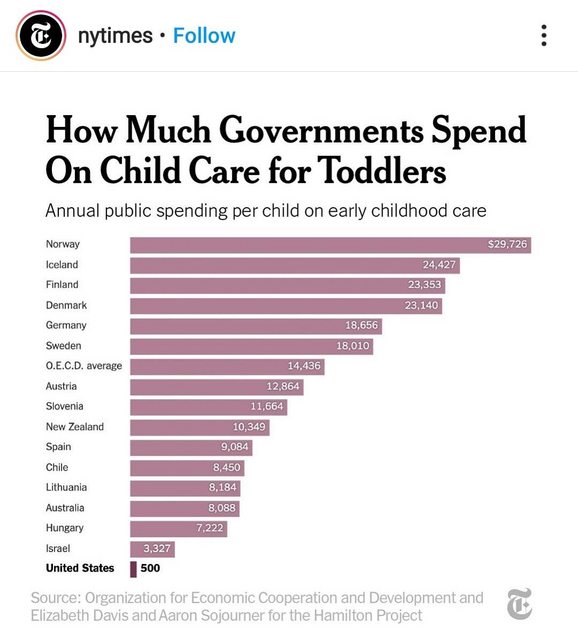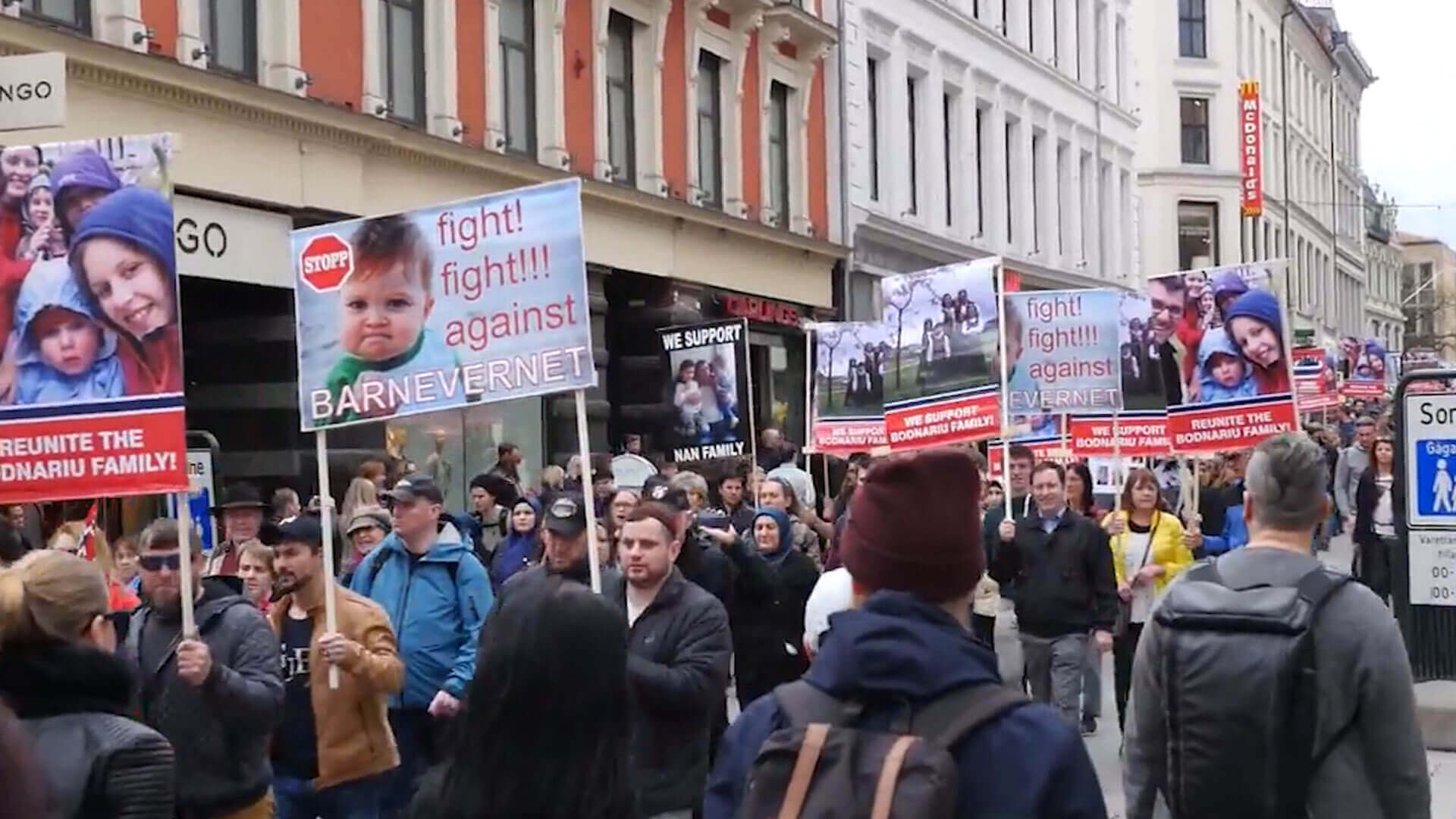Norwegian Ambassador to India, Hans Jacob Frydenlund, penned an opinion piece in the Indian Express responding to a new movie called Mrs Chatterjee vs Norway. The film drew a strong emotional response from audiences over the Norwegian Child Welfare Services’ treatment of the mother, who was deprived of custody of her children, over what the movie presented as cultural differences in parenting.
Norwegian Government Called Out For “State-sponsored Terrorism”
Mrs Chatterjee vs Norway, released on 17 March, was based on the real story of Sagrika Chakraborty’s struggle to regain custody of her children from the Norwegian government. The movie depicted the Norwegian Child Welfare Services as a draconian institution infested with racism and biases against immigrants.
The movie sought to draw attention to the improper reasoning of the social workers in seizing Charaborty’s children, which the audiences even went so far as to call “state-sponsored terrorism.” For instance, the social workers accused the couple of “improper parenting” for feeding their children with their hands, which they classified as forceful feeding. It also showed that the social workers receive commissions and additional payments, incentivising them to ensure more children are taken into custody.
Admittedly, the exact facts of the case may be considered a questionable or one-sided depiction of the precise turn of events. Nevertheless, Norway’s response to the movie’s facts shows a blatant denial on their part of the deep-rooted issue of discrimination in the institution, particularly given the previous allegations raised in the media and even international rights courts.
Norway Comes Out In Barnevern’s Defence
In his article, the Norwegian Ambassador sought to clarify that the movie is a “fictional representation” of the events that transpired and it has several “factual inaccuracies.”
He defended Norway’s Child Welfare Services or the Barnevern, saying that the institution has a difficult task of ensuring “alternative care” for children. While the movie accuses Norwegian authorities of being motivated to seize more children in exchange for commissions or bonuses, he reassured that the issue “will never be motivated by payments or profit”, and the social workers also use techniques, such as education and guidance, as means of intervention. Nevertheless, he reiterated that the “best interest” of the child was always a priority for Norway.
The Ambassador also stressed that Norway has no tolerance for violence against children, which he further clarified did not mean that the children could be taken into state protection over an “occasional slap.”
As a result of the alleged misrepresentation of the facts in the movie, which the Ambassador refused to specify, Frydenlund said it was necessary to correct the perception of movie-goers that Norway is an “uncaring country.” He sought to reassure immigrants and those seeking to visit Norway of the country’s hospitality.
My Op-Ed in @IndianExpress today about the film #MrsChatterjeeVsNorway. It incorrectly depicts Norway’s belief in family life and our respect for different cultures. Child welfare is a matter of great responsibility, never motivated by payments or profit. #Norwaycares pic.twitter.com/FpVWmdLv5h
— Ambassador Hans Jacob Frydenlund (@NorwayAmbIndia) March 17, 2023
Sagarika Chakraborty, whose book — The Journey of a Mother — inspired the movie, hit back against the “false statement” and accused the government of spreading lies against her by denying the factual accuracy of the event's details in the movie. She said Oslo had not apologised for the racism and demanded that the government focus on schooling their social workers on cultural differences.
Barnevern’s History of Discrimination
The Ambassador says that the Child Welfare Services apply to everyone in Norway irrespective of “ethnic background, nationality, or religious beliefs.”
While Frydenlund seeks to paint a rosy picture of Norway’s Child Welfare Services, which takes over 1,500 children from their parents each year, the movie’s depiction of the racism in the institution is not that distant from reality.
It has previously been accused of holding biases against immigrant parents on many occasions. For instance, a Sri Lankan couple’s three children were taken from their school in 2011 and placed under emergency care. The officials claimed to have received an anonymous tip about the couple emotionally and physically abusing the children, including cutting their son’s hand with scissors.
One parent said they had only given the children an “occasional slap” and accused the Barnevern of having “a tendency to make sweeping generalisations” about immigrants.
The accusations against the Child Welfare Services become even more alarming given that a Norwegian court agreed that the nature of violence the parents used for discipline is a “cultural” issue that is “correctible.” They finally returned two children to their parents, one still in a foster home.
A similar incident occurred when a Czech couple lost custody of their children to the Child Welfare Services, causing President Milos Zeman to compare the social workers’ behaviours to Nazis.

Vague Standards Used to Target Immigrants
According to Norwegian human rights attorney Marius Reikaras, the institution watches over immigrants like “Big Brother,” highlighting the differential treatment of the institution towards non-Norwegians.
According to a documentary by the BBC, several lawyers, psychologists, and social work experts reached out to the government in a letter in 2018 highlighting the “dysfunctional” nature of the institution, which causes it to make “far-reaching errors of judgement with serious consequences. Most situations where the children were taken away from the parents was justified by the “lack of parenting skills,” a vague standard that is easily and regularly abused to justify decisions.
ECHR Accuses Barnevern of Rights in 7 Cases
The issue of discrimination in the institution has also received attention in international courts. Norway’s Child Welfare Services have had 39 cases against them admitted to the European Court of Human Rights (ECHR). Seven out of nine cases the court has ruled on have found violations of the right to family life.
The ECHR has concluded that social workers have used coercive measures to restrict contact between parents and children. In another case, the court fined Norway for forcefully removing a child from his Somali parents’ custody.
But #Norway is not respecting the Judgments from the Court, doing nothing to facilitate reunification between biological familiy.
— Tomáš Zdechovský (@TomasZdechovsky) November 25, 2021
What can the international society do to force Norway to stop these atrocities to innocent families?
India’s Concern and Norway’s Choice of Ignorance
While the Norwegian government has taken steps to comply with the judgements, the Ambassador’s statement trivialises the issue of the country’s Child Welfare Services. By dismissing the concern that the movie has instigated in the media and audiences, Frydenlund is failing to acknowledge the gravity of the flaws of the system and its impact on Indians, 200,000 of whom live in Norway.
The criticism is not unfounded, given that the ECHR, Norwegian human rights groups, and international media houses have independently found the institution guilty of wrongdoing. The Child Welfare Services has to resolve issues such as racism and child rights within the system, even as the Norwegian government celebrates its child protection work.
Given that the Indian diaspora forms the largest non-EU immigrant population in Norway, the government should use the current public scrutiny of the Child Welfare Services instigated by the movie to argue for measures to prevent discrimination in the institution.

